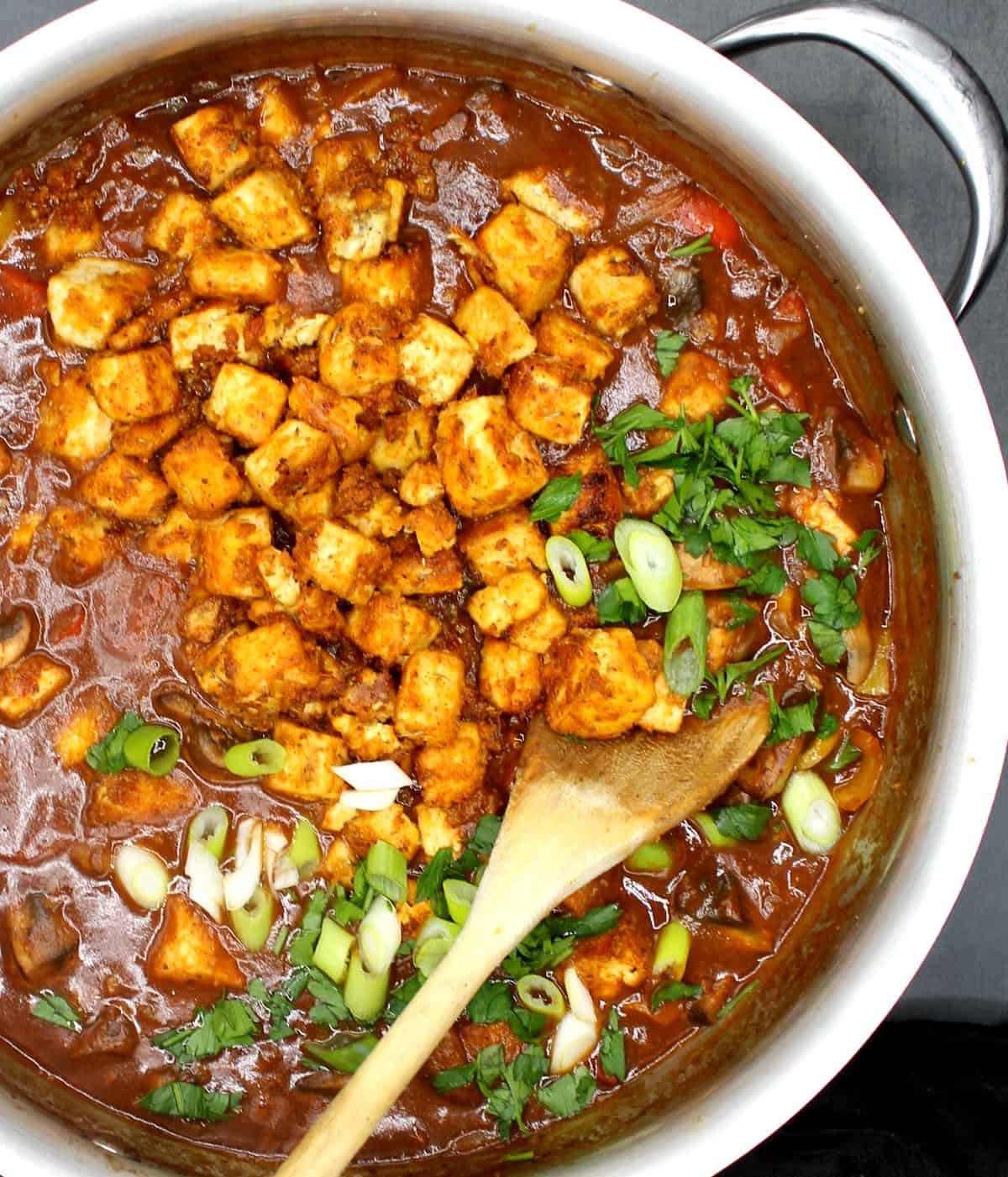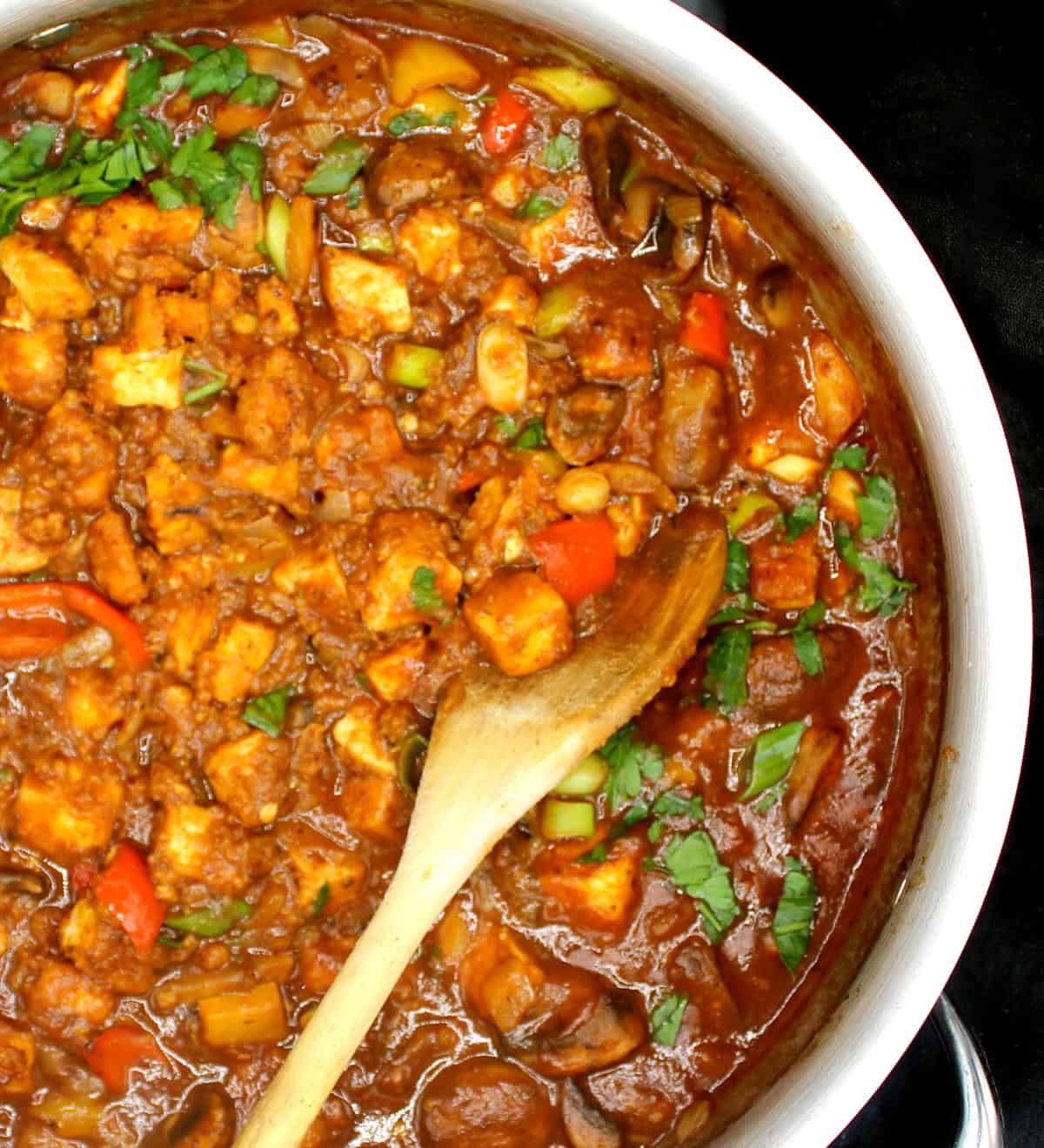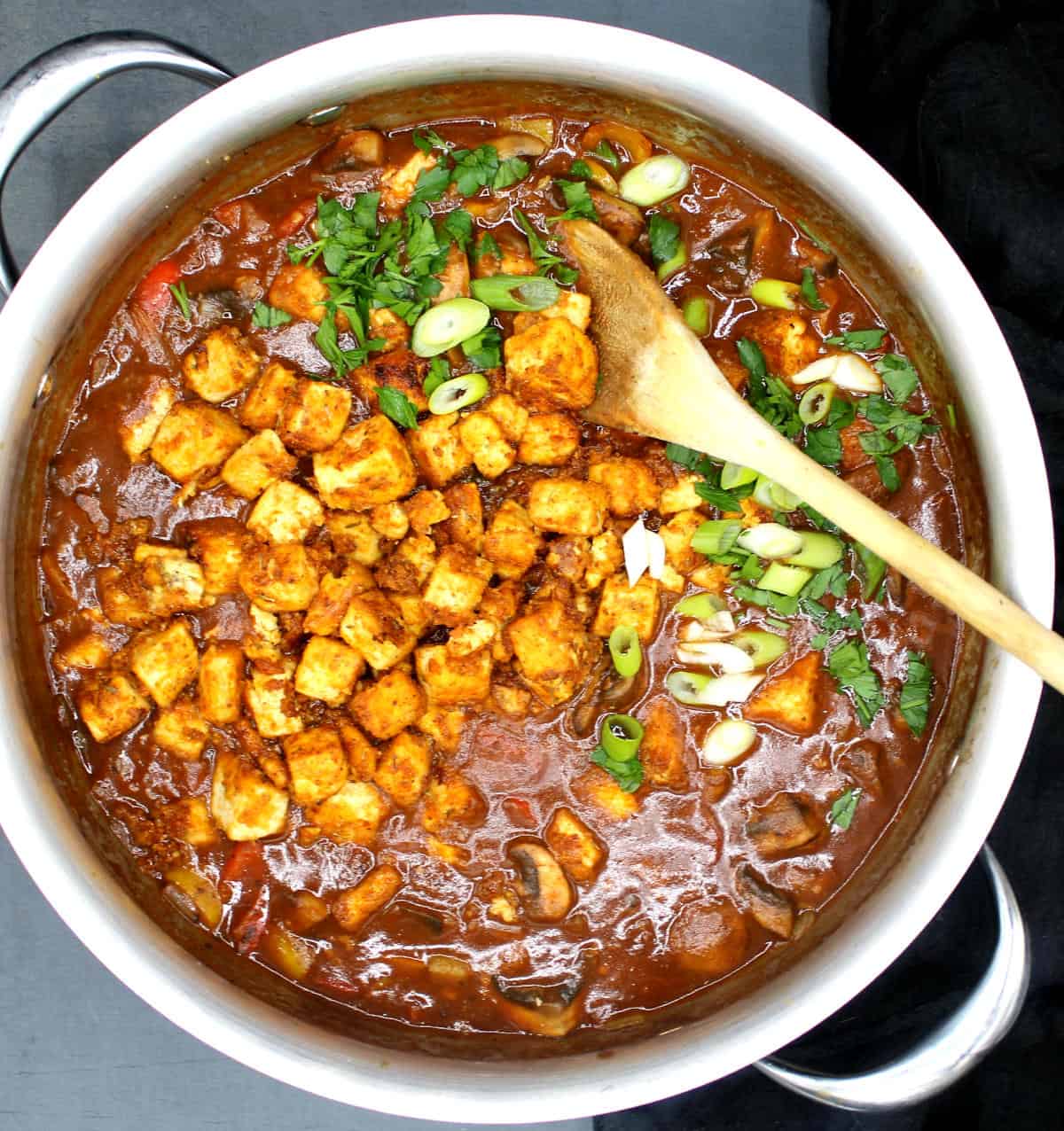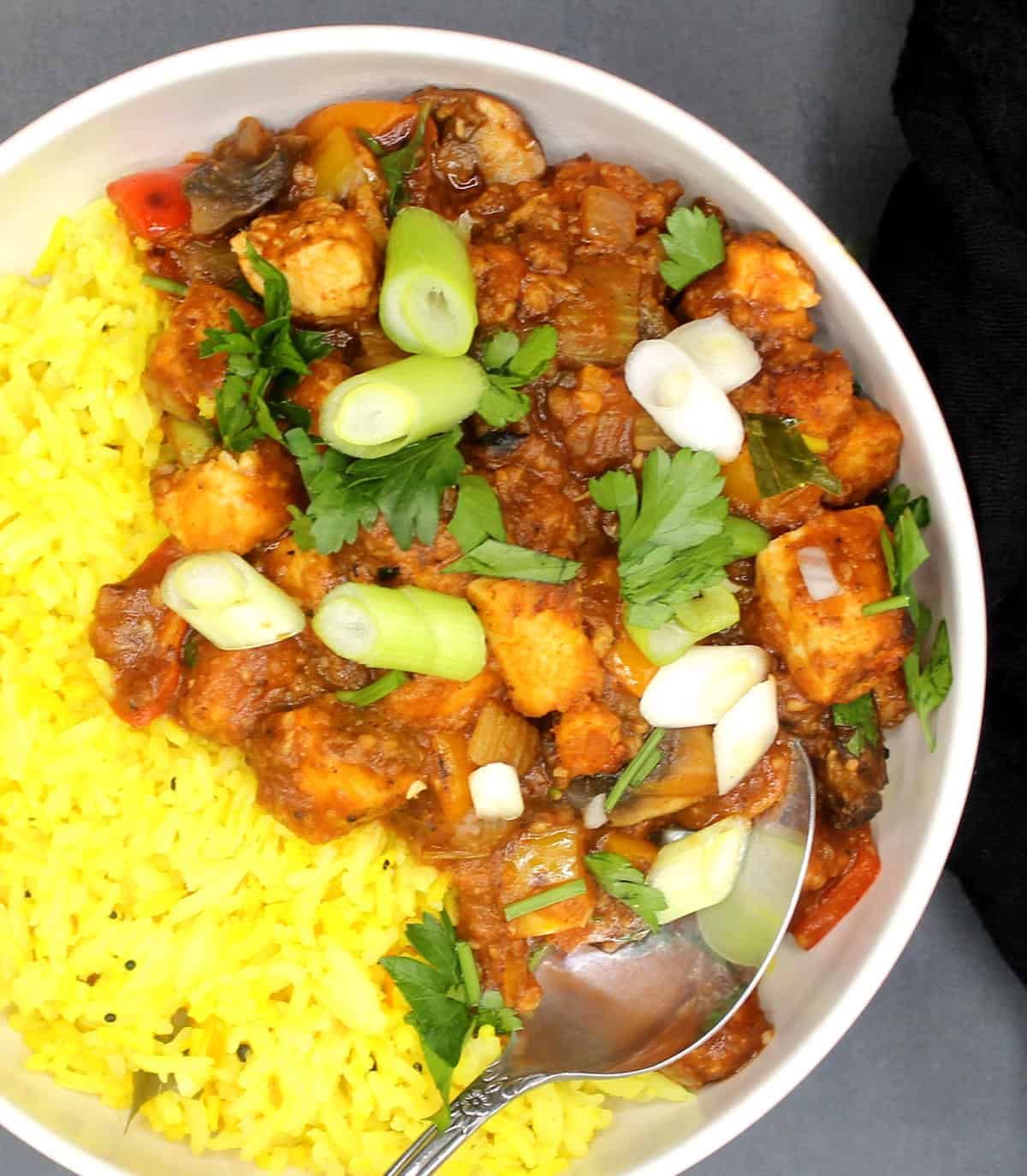This vegan étouffée, a veggie-packed stew from Louisiana, is as close as it can be to an authentic version without the crawfish or shrimp that typically go into it. The distinctive–and delicious–cuisine of Louisiana originated from a commingling of local flavors and ingredients available in this coastal state with the cooking techniques of foreigners who settled here, mainly the French colonists. (If you’d like to know more, here’s an excellent article that explains the background of Louisiana cooking–and more specifically Cajun and Creole cooking–far beter than I can.) One of the most delicious outcomes of this commingling was an étouffée. The word translates from French into “smothered” or “suffocated” and to break it down in the context of this dish, a meat, usually shellfish, is drowned in a flavorful sauce and smothered or braised with veggies. This is hearty food, the kind that makes you lick your fingers and your bowl. And it is quite distinct from a gumbo, also delicious, which is soupier and made with more than one kind of meat and seafood (check out my vegan gumbo).
Why we love this dish
Packed with veggies. Loaded with protein. Can easily be made gluten-free. Healthy. Delicious. Easy.
Making the roux
A “roux” is a fancy French term for a thick paste made by frying flour in fat to thicken and even flavor a stew or soup or gravy. One of the primary differences between the Cajun and Creole versions of an etouffee is the amount of time you cook the roux and its color before you add the rest of your ingredients in. In Cajun cooking, you’d cook the roux for as long as 30 minutes, until it’s a deep chocolate brown (but not burnt!). In Creole cooking, you’d fry the flour for a shorter time and make a blonde roux. For my vegan étouffée, I fry the roux in less oil than a Lousiana cook might approve of (many versions use a 1:1 proportion – ½ cup of fat to ½ cup of flour. Some even double up on the fat, so you’d use a cup of fat to ½ cup flour.) I just use two tablespoons of oil in the dish–half for frying the tofu and the other half for browning the flour that remains after coating the tofu. So my roux has a powdery texture, definitely dryer than a paste. And I fry the roux to the Creole standard–on the lighter side, with the final roux resembling the color of peanut butter. It works beautifully. Making the roux and etouffee gluten-free: If you want to make the etouffee gluten-free, just use gf all purpose flour, no other adjustments required. Try and use a flour free of gum. Rice flour works too. Check to get new recipe updates by email.
Steps and tips for making a vegan étouffée
What to serve with étouffée
A fresh, green salad is a great accompaniment. Or try this beet salad, which is super simple to make and great in winter, when beets are easily available. I love serving the étouffée over rice. Brown rice or white rice would work, or try this yellow turmeric rice, which complements it perfectly.
Storing and freezing
This étouffée tastes even better as it stands, so you can easily make it a day ahead, especially if you plan to serve it for an occasion like Mardi Gras. Store it in the refrigerator and reheat in a saucepan or in the microwave before serving. If it’s too thick, you can thin it out with more stock or water. Always check for salt and pepper and add more if needed after you add water to thin out any dish. You can also place the étouffée in a freezer safe container and freeze. Thaw and reheat before serving.
More vegan New Orleans recipes you might like
Grilled Tofu Steaks in a Creamy Vegan Cajun Sauce Vegan Red Beans and Rice Vegan Dirty Rice Vegan Muffaletta Casserole Vegan Meatball Fricassee
Recipe card





